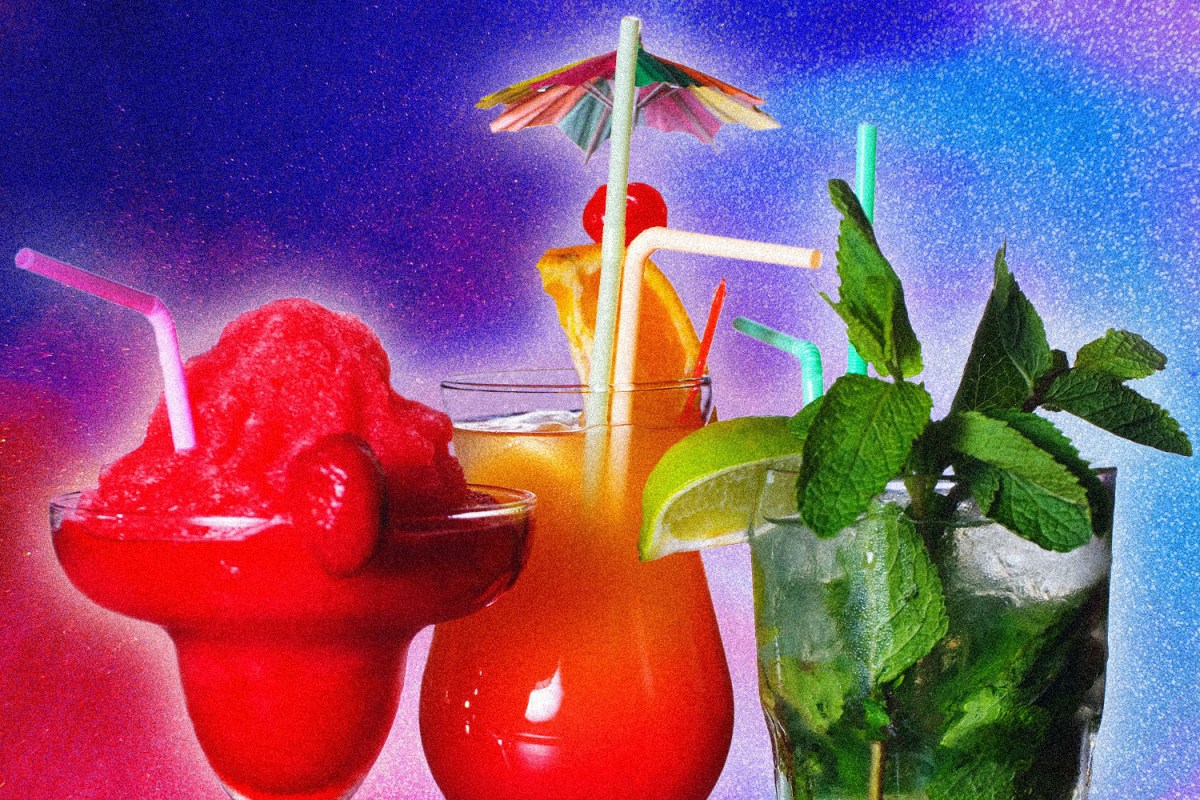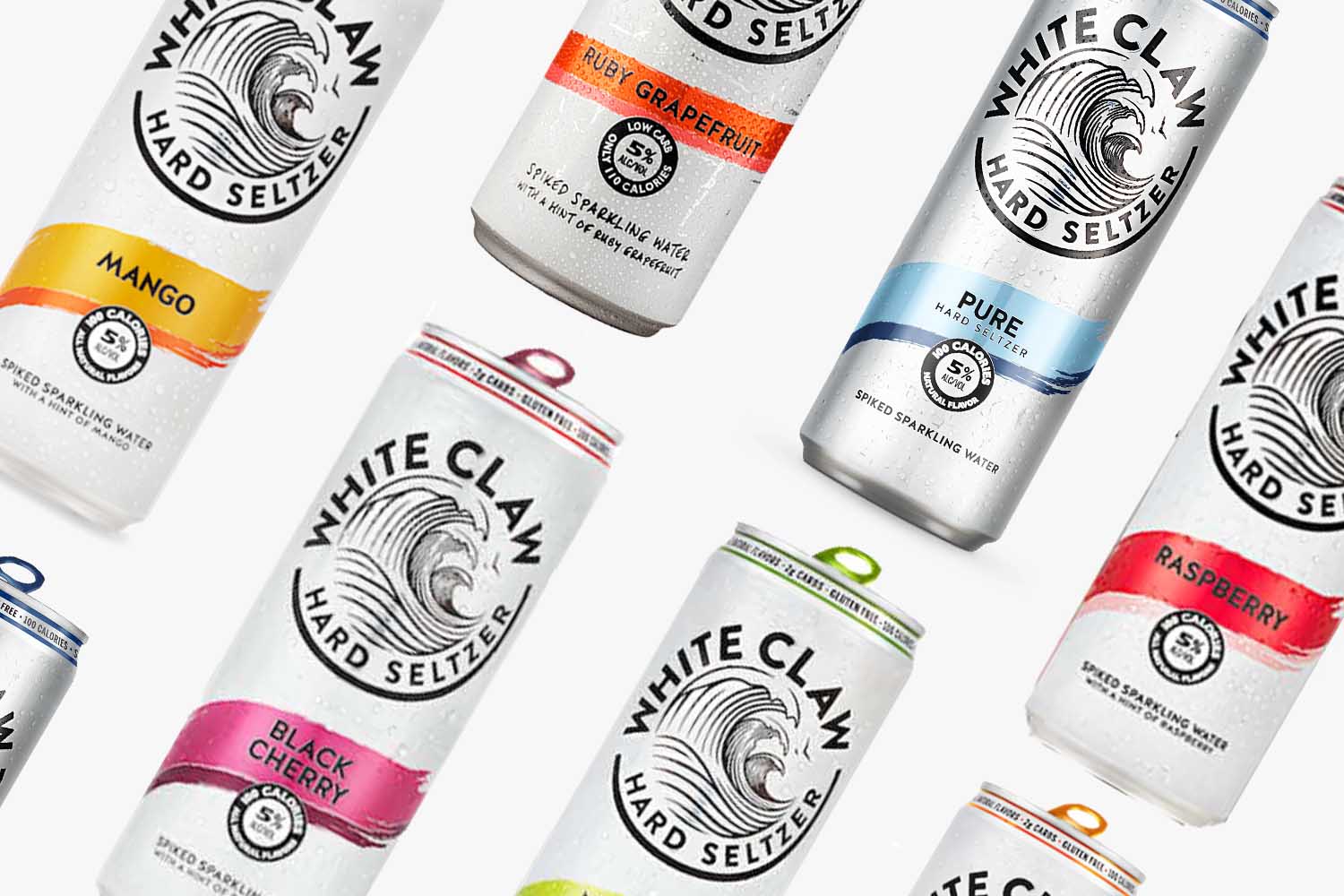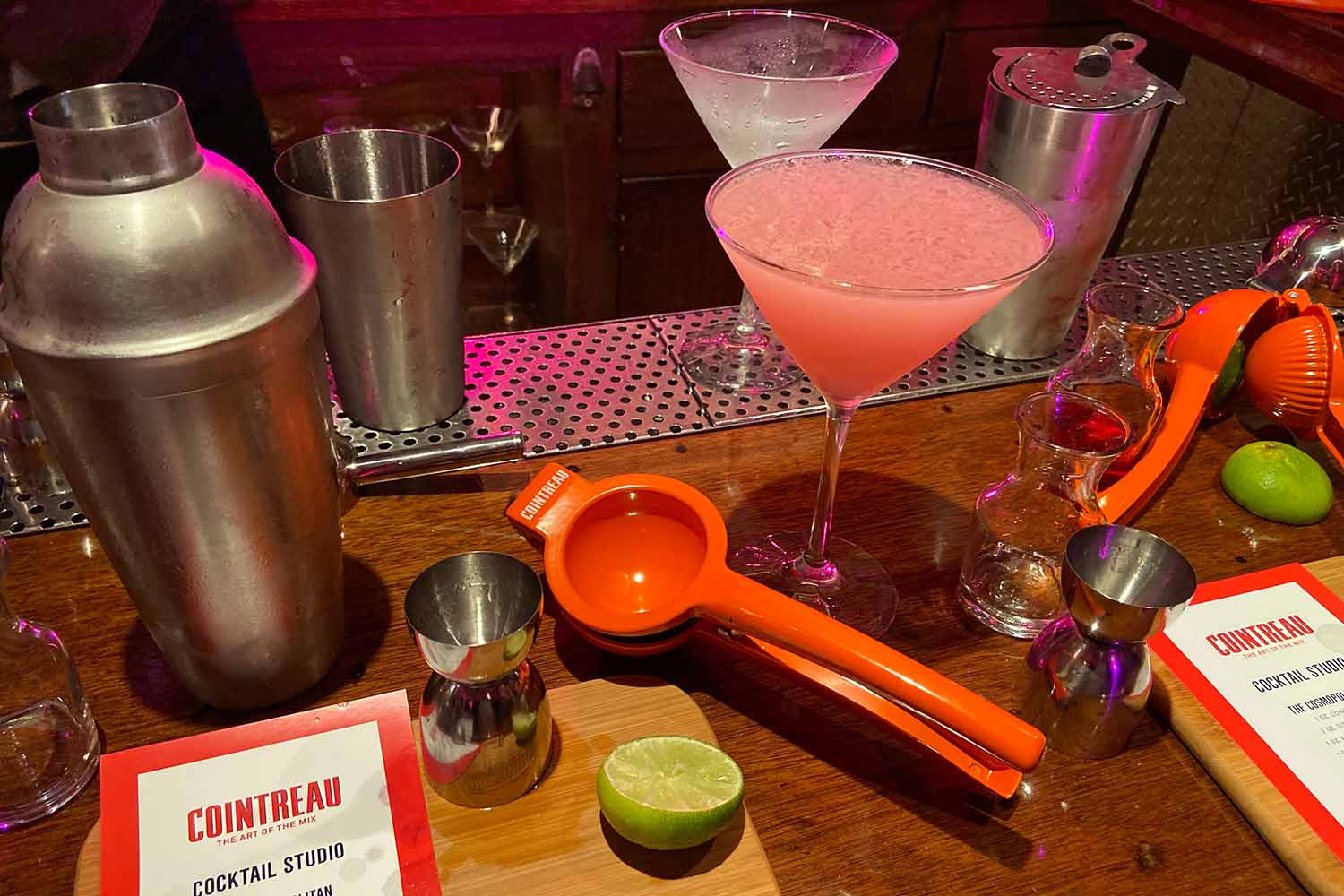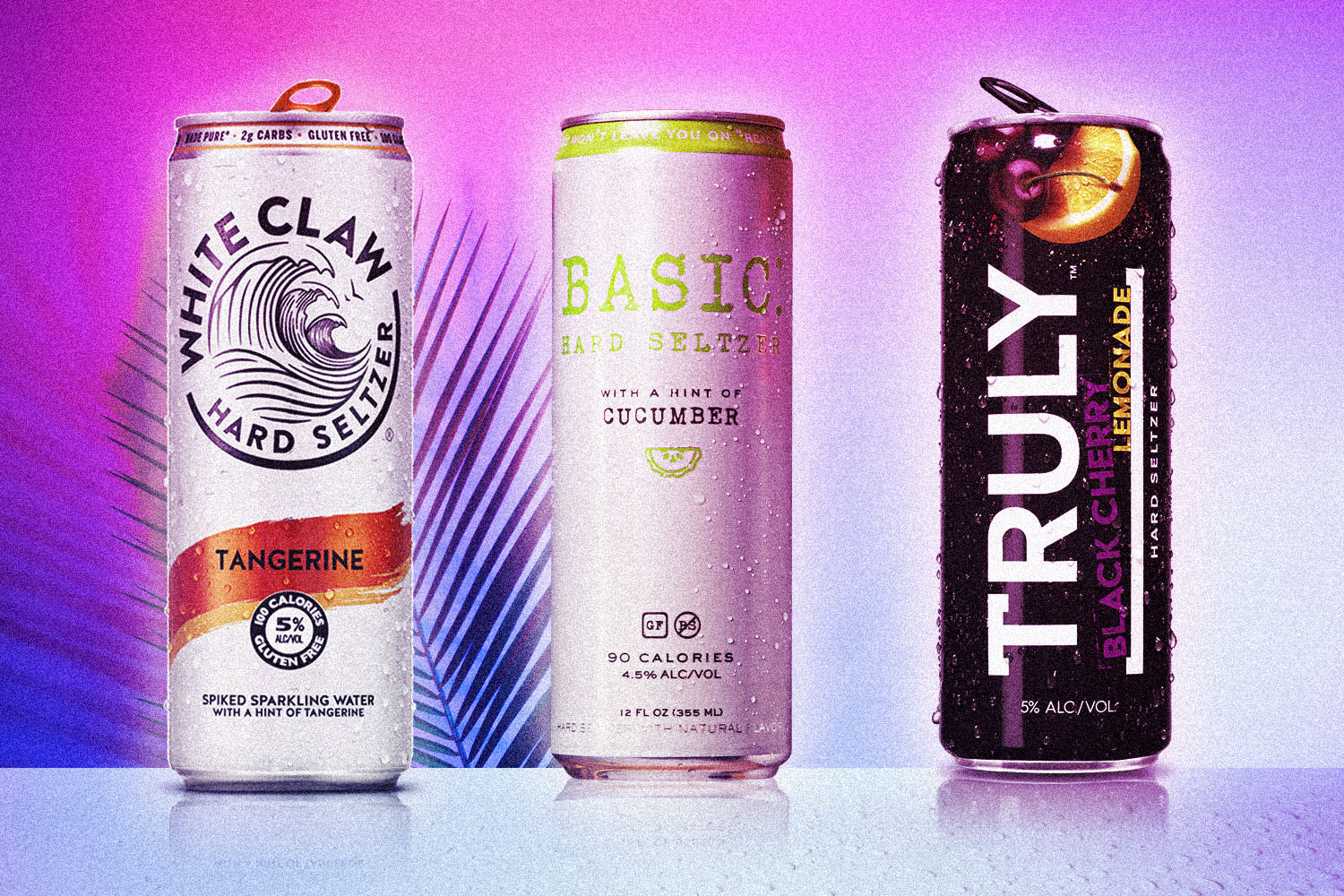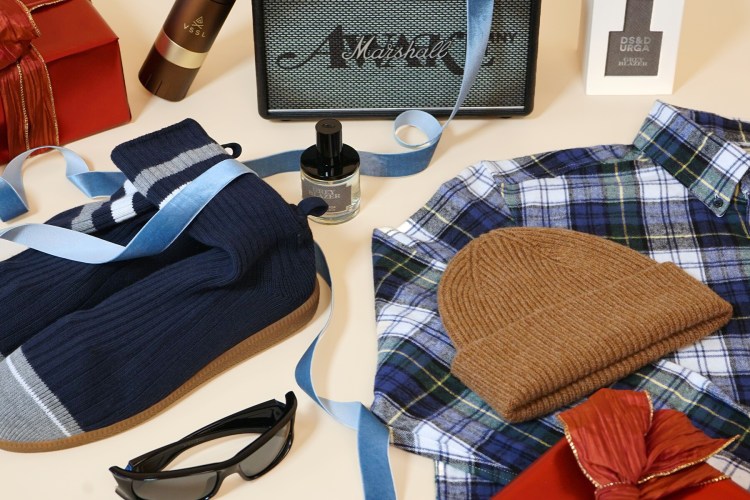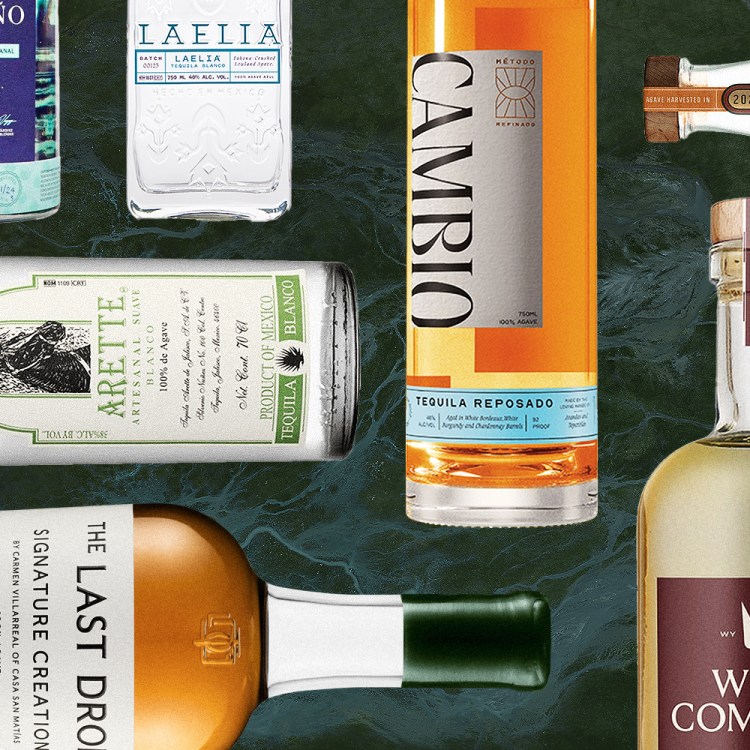Like most things in society, alcohol is often needlessly gendered. Even if we all agree, logically, that gender is a social construct and is fluid, not binary, you still know what I mean when I call something a “girly drink.” Unfortunately, as humans, we’re slow learners and even slower unlearners.
Aside from maybe straight whisky and beer, a “girly” drink can be almost anything, really, because toxic masculinity knows no bounds. In general, however, that pejorative label tends to get slapped on any alcoholic beverage that’s sweet, fruity, brightly colored and/or served with some sort of flower or umbrella garnish. This tends to mean that men are missing out on a lot of very delicious drinks that also, for the record, often have a much higher ABV than your typical manly-man beer.
But does this stereotype at least give women a free pass to enjoy these beverages that are somehow supposed to be characteristic of their gender? Of course not! The great thing about gender stereotypes is that in shaming men for engaging with “feminine” things, we’re actually reinforcing the idea that womanhood, itself, is inherently shameful.
So where does that leave us? With a bunch of men who think being too scared to order a drink they want is a sign of their indomitable masculinity, and a bunch of women feeling ashamed of being women at all, per usual.
Fortunately, there’s something you, yes you, can do about this toxic dynamic. Grow the hell up and drink whatever you want; you’re an adult.
“I can only speculate on what makes a man get so hung up on whether or not a cocktail is butch enough for his fragile masculinity,” says Jeffrey Morgenthaler, award-winning bartender and author of Drinking Distilled. “A real man is always one that doesn’t walk around with this much baggage about their image.”
Tyler Smiley, creator of the blog the Millennial Mixologist, has done some speculating as well. “I think men get so hung up on gendering drinks for the same reason tattoos are considered ‘unprofessional,’” he tells InsideHook. “It is just an age-old way of thinking that hasn’t been challenged yet, but keeps getting passed from one generation to the next as a result.”
Fortunately, it seems like many men may finally be ready to issue that challenge. As society sours on hypermasculinity and all its trappings, the image of the beer-swilling man’s-man is beginning to seem dated and cartoonish.
‘“That’s a girl drink.’ Okay Brock. Enjoy your 5% bread flavored soda,” reads a viral tweet from last month. “I’m drinking a fruit smoothie that’ll have me fucked up beyond recognition in 15 minutes. It’s called efficiency.”
Perhaps unsurprisingly, this trend away from gendered booze seems to be led by younger millennial and Gen Z drinkers.
“I do think there is a trend among younger drinkers to get rid of their previously held gendered stereotypes,” says Martin, a 23-year-old who says he rarely shies away from ordering a “fun and flirty” cocktail.
“I think growing up we inherited a lot of our parent’s and society’s biases, whether about gender, race, class, etc.,” he tells InsideHook. “And while younger people are generally more progressive and less interested in the binary, they still have to work to actively dismantle those learned attitudes.”
While dismantling learned biases is often hard work that requires careful reflection and honest self-evaluation, getting over your weird gendered alcohol bias is actually as easy as kicking back with a delicious drink and not shaming anyone else for doing the same.
Subverting the gender booze binary
Ask any seasoned mixologist and you’ll get the same answer: there’s no such thing as a girly drink.
“That said, I’d certainly argue that there are drinks I’d consider to have ‘feminine’ qualities at times, such as drinks with subtle or delicate flavors, sometimes floral notes, or even a fruit-forward quality to them,” says Morgenthaler. “And that’s such a great quality for a beverage to have,” he adds. “Think about a nice semi-sweet Riesling. It’s full of white flower aromas, it’s delicate, a little sweet, and there’s about nothing else I’d rather have to drink alongside really spicy Asian food, or some nice cold, leftover, spicy fried chicken.”
When it comes to the cocktail list, which is often particularly risky territory for fragile male egos, Smiley assures men that drinks simply don’t have genders.
“There are sweet cocktails, sour cocktails, spicy cocktails,” he says. “There are vodka cocktails and there are bourbon cocktails,” but no girly cocktails.
“It isn’t about masculine versus feminine,” he continues. “it is about what flavors are in the cocktail and what spirit is used to make them.”
As is often true of gender roles and assignation in any case, whether we see a drink as “masculine” or “feminine” has little to do with any of that drink’s inherent qualities. As Martin points out, whether or not a drink is considered “girly” actually has much less to do with its flavors, ingredients or ABV level than it does with context and presentation.
“If I have friends over and decide to shake up some rum, cranberry juice and pineapple juice before pouring it into a regular glass, I just have a tasty orangish-reddish drink that people might even be interested in trying,” he tells InsideHook. “If, however, I am out for dinner and ask for a Malibu Bay Breeze and receive a drink in a tall, curvy glass with a pink straw, cocktail umbrella, and wedge of pineapple on the rim, I have crossed a line and ordered a ‘girly drink’ invalidating my manhood.”
While these attitudes seem to be on the decline among young millennial and Gen Z drinkers, Martin adds that there are definitely still moments and contexts in which these biases flare up, like the “stereotypically masculine” friend who discovered a passion for Sex on the Beach but couldn’t bring himself to order the next round. “He squirmed in his seat and tried to pass it off to another one of us, claiming he’ll get the first round at the next place, clearly uncomfortable with the idea of having to face another human being and say, ‘Can I please get four Sex on the Beach?’”
And while most of his friends seem to agree that this is no way to live and can usually be found scouring the menu for the fruitiest of cocktails, all it takes to shift the tone is a strong male presence.
“There are still occasions where I ask a conventionally handsome, seemingly masculine waiter for their special Pomegranate Flirt-ini and the table lets out some chuckles after he walks away, as if there’s some unspoken agreement between men I just broke and he’s off to tell the High Council about my crimes,” says Martin.
“Maybe there’s still some remaining gendered notions in their heads from when they were growing up that comes out ever so slightly during those moments, and they almost feel compelled to act that way,” he adds. “But on the whole I don’t believe they actually care about my drink of choice.”
The Great Gender Neutralizer
“Attitudes are slowly changing,” says Smiley, who adds that throughout the year he spent working at a local craft distillery in the land of Dogfish Head Beer, of all places, he still found himself selling “a lot of drinks to guys that some people might consider ‘girly,’ and even the reverse for women.”
If these attitudes are indeed shifting, we owe it to the meteoric rise of the booze world’s most popular canned gender neutralizer: hard seltzer.
“White Claw has acted as a sort of stepping stone to trying out and accepting other options,” says Martin, who adds that he now commonly sees old friends who wouldn’t have been caught dead with anything other than a beer in high school posting hard seltzers and even ciders and lemonades on Instagram and Snapchat.
“Beer is still the ruler,” he adds, “But it’s becoming more like the Queen of England, where most people still respect it, but more and more are thinking, ‘Is this really necessary?’”
But how did White Claw, once the drink of choice for basic sorority girls, make the jump from “white girl wasted” to “Saturdays are for the boys?” As usual, it’s all about the presentation.
“I think the same way the name and presentation of a cocktail affects your perception also extends to the branding and marketing of store-bought cans and bottles,” says Martin. “White Claw wins over traditionally masculine men with its understated presentation: a silver can with minimal wave design, a single splash of color to indicate the flavor, and the no fuss clear color of the drink itself.” Add in the birth of the edgier “no laws when you’re drinking claws” meme, and suddenly you have a summer beverage safe for a man.
“It’s all about how you package it without alerting that fragile male ego,” adds Martin.
Unfortunately, some companies have taken that idea and run too far in the other direction, reinforcing rather than simply neutralizing gender.
“You always see someone having to put a ‘manly’ spin back on it because they think they need to cater to these dudes,” says Morgenthaler, citing the rise of rosé. “First everyone dropped their preconceived notions of what pink wine meant, and the drink had a real renaissance. But eventually we saw companies hawking ‘Brosé’ and all this nonsense.”
Fortunately, this manly-man pandering seems to be losing traction, met with more eye-rolling than eager male buyers. “The best thing we can do is vote with our dollars and hope those products go away,” says Morgenthaler.
In the meantime, what can a man do to get over his gendered drink biases?
“I don’t know, it’s a cocktail,” says Morganthaler. “Just have a drink and relax.”
Every Thursday, our resident experts see to it that you’re up to date on the latest from the world of drinks. Trend reports, bottle reviews, cocktail recipes and more. Sign up for THE SPILL now.
